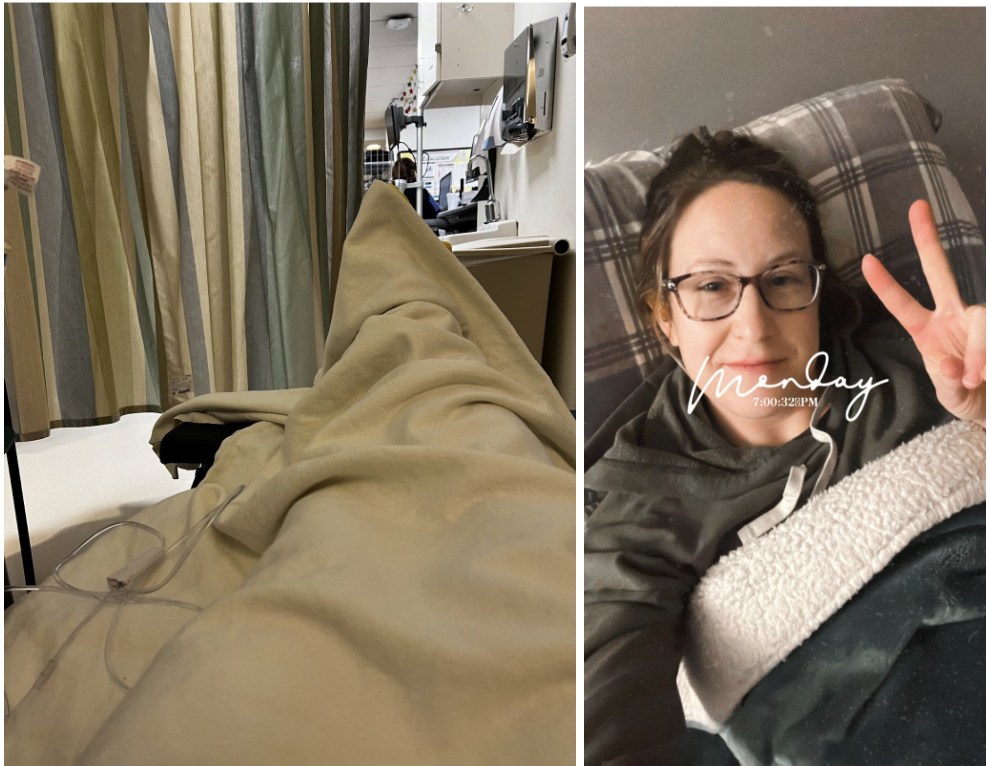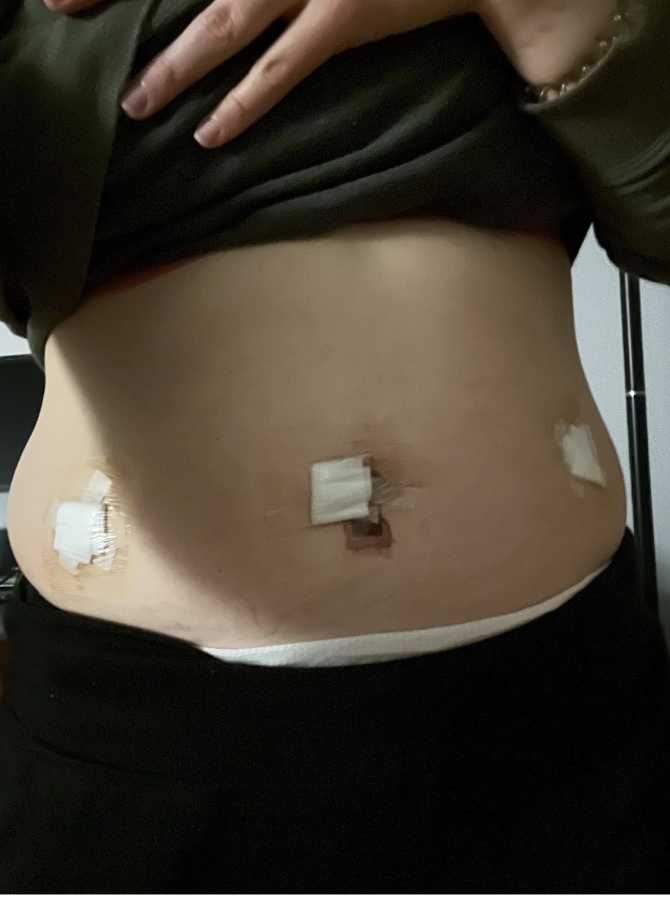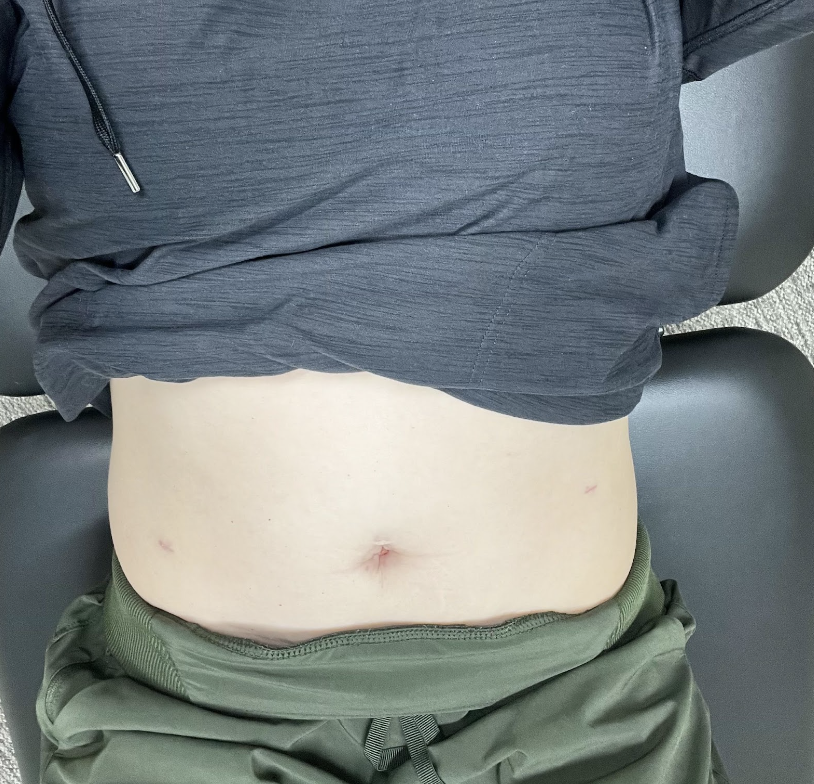It has been 4 weeks since I (Dr. Marissa) underwent an arthroscopic abdominal surgery to remove a grapefruit sized fibroid (11 cm!). I wanted to share a bit about my experience and how PT can help with post-op recovery.
First, what is abdominal arthroscopic surgery?
Abdominal arthroscopic surgery is a technique in which the surgeon creates 3-4 incisions in the abdomen, with one usually in the belly button. One incision is used for a camera so the surgeon can see the tissues inside the abdomen, and the other incisions are used to insert equipment. The abdomen is inflated with CO2 to create better visualization for the surgeon.
The specific surgery I had was an arthroscopic myomectomy with morcellation. They created 3 incisions in my abdomen. One for the camera and two for equipment. Morcellation is when the tissue (fibroid in my case) is cut into smaller pieces to allow it to be removed more easily. The tissue is removed via a bag and pulled out through one of the incisions.
Other reasons abdominal arthroscopy might be performed:
- removal of other abdominal organs like the appendix, gallbladder, liver, uterus, ect.
- radical prostatectomy
- bowel procedures
- bladder and kidney procedures
- gastric bypass
- fertility procedures
Restrictions vary after surgery, depending on the procedure performed. For example, there are typically longer/more restrictions after a hysterectomy, bowel resection, and radical prostatectomy than I had for my procedure.
Ways Physical Therapy can help after surgery:
- PT can give you ideas on how to modify and slowly reintroduce movement
- Active recovery can be a great tool to use post surgery to help with blood flow, mobility, pain management, and improving mood. Throughout the post I will share some ways that I included gentle movement and then modified exercises to still participate in Crossfit.
- Nerve desensitization and scar mobilization once incisions are healed
- Neuromuscular re-education of the pelvic floor and abdominals. This is especially important when an organ that the pelvic floor supports is removed, such as in a hysterectomy or radical prostatectomy.
- Tips for managing constipation which is common post surgery.
- Manual techniques to manage pain
- Education on body mechanics
Diving more into my experience:
Before surgery:
The day before surgery I had to maintain a liquid diet and perform a “bowel clean out”. This was actually easier than I thought-though I did throw up once 🙁 The drink does not taste good! I could not have anything to drink after midnight the day before surgery. I arrived for my surgery 2 hours before my scheduled time, at 5:30 am. I was very anxious but the check-in and pre-op process went very smoothly. I was wheeled down for surgery promptly at 7:30 am. I was given a sedative prior to getting to the OR so I don’t remember anything after saying goodbye to my husband.
The gross drink
Immediately post-op:
My surgery took about 2 hours but I didn’t “wake up” until noon. Coming out of anesthesia was definitely a weird experience! It’s a little bit like waking up after you accidentally fell asleep on the couch. I felt very disoriented for about an hour and slightly disoriented for the rest of the day. I’m happy my husband was there to support me and drive me home (you can’t drive for 1 week post-op).
The main criteria for discharge was that my pain was under control and that I was able to urinate on my own. I had a catheter during the procedure and my bladder was having a difficult time “waking up”. I had a bladder scan performed a few times because I was having so much difficulty. It turns out, I just didn’t have enough fluid in my bladder to initiate an urge (you need about 400 ml, and I had half that). I ended up needing 4L of IV fluid, 2 bottles of water, and a coffee until I was finally able to go. I guess I was a little dehydrated from all my diet restrictions the days leading up to surgery.
I also used some of my tricks as a pelvic floor PT: walking around, turning on the faucet, and breathing through a straw. These tactics are helpful to relax the pelvic floor and elicit a bladder contraction to empty the bladder. I finally peed and was discharged around 4pm.

Post op recovery and night 1 home from surgery
Week 1-3 post op:
My initial post-op restrictions were no driving, no running, no lifting >15#, no intense exercise, and nothing in the vagina for 2 weeks.
During my first week post-op I mostly rested with occasional bouts of walking around the house. I binged watched some TV and movies, read some books, and napped. I was surprised how tired I was! We were very lucky to have childcare help the whole first week. I would not have been able to do it without that help.
The pain in my incision was about a 4-5/10 for the first few days, and I managed that with over the counter medication and ice. I was prescribed stronger pain medication but didn’t end up picking it up from the pharmacy. I also used miralax and a step stool to aid in making bowel movements more comfortable. Sometimes bowel movements can be difficult post abdominal surgery due to anesthesia, pain medication, and decreased activity. The pain that was most significant for me was the gas pain. During the procedure, they fill the abdomen with CO2. This inflates the abdomen, allowing the surgeon better visualization, and also helps to get the bladder/bowels out of the way. Afterwards, the gas has to leave the body. This often causes a lot of shoulder pain, due to pressure on the phrenic nerve. My shoulders and ribs were both very painful, with sharp pain when I inhaled.
After the first week, I had help from family and friends to lift my 1.5 year old into and out of her crib. She also used a stool to climb up onto the couch or onto her chair for meals. Not being able to pick her up was definitely one of the most challenging aspects of recovery.
I started doing some light stretching during the second week. This included cat/cows, diaphragmatic breathing, and lateral trunk flexion. My ribs were still very sore but the incisions and my abdomen itself really had no pain.

Incision the day I got home from the hospital
I gradually increased my activity over weeks 2 and 3. I returned to Crossfit classes with very modified workouts. I subbed biking for running, box step ups for box jumps, rows for pull ups, used 10lb dumbbells for any barbell lifts, and didn’t do any focused abdominal exercises (sit ups, planks, toes to bar). I walked 1-2 times a week on the track at the YMCA. My incisions and abdomen continued to be relatively pain free so I tried to stop my over the counter pain medications. However, I did have pretty significant rib pain (and even considered going to the ER one night). So, I started to take them again for another few days, and they helped immensely. After week 3, I was no longer taking any meds and I was cleared to return to all activity, gradually.
Since then, I have slowly increased my activity level in Crossfit classes, adding in box jumps, jump rope, running, and barbell movements. My back will get sore if I try to lift close to what I was doing pre surgery, so I am working on core strength and still scaling weights. Instead of sit ups, I have been performing bird dogs and dead bugs. I also started working on scar mobilization, directly to the incisions. I do have some stitches left in one of the incisions so I work only on the skin surrounding that incision.
Overall, my recovery has been pretty smooth. I have been applying my PT background to help, and I am confident I will be back to my normal activity levels in the next few weeks. Thanks for reading and reach out with questions!

Incision today